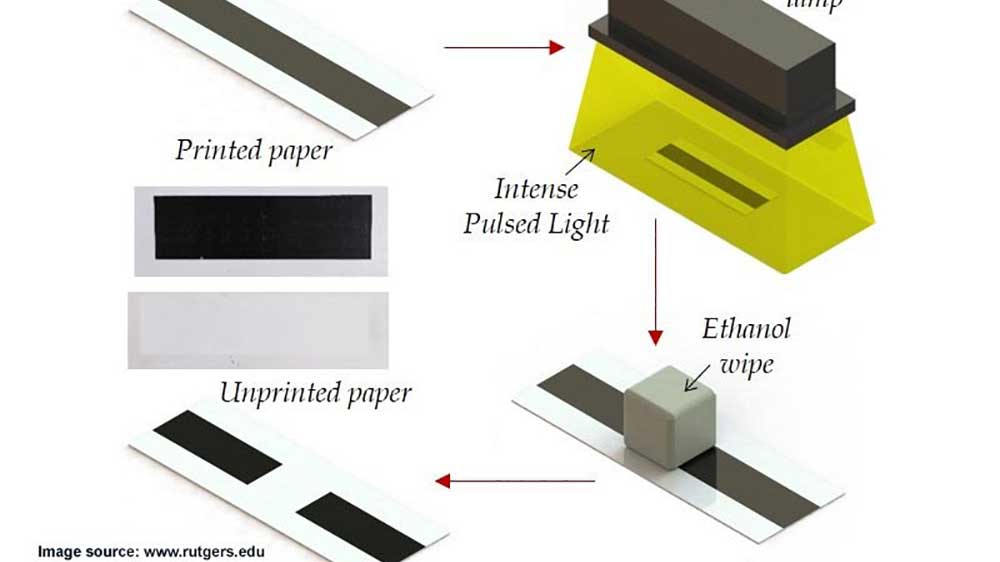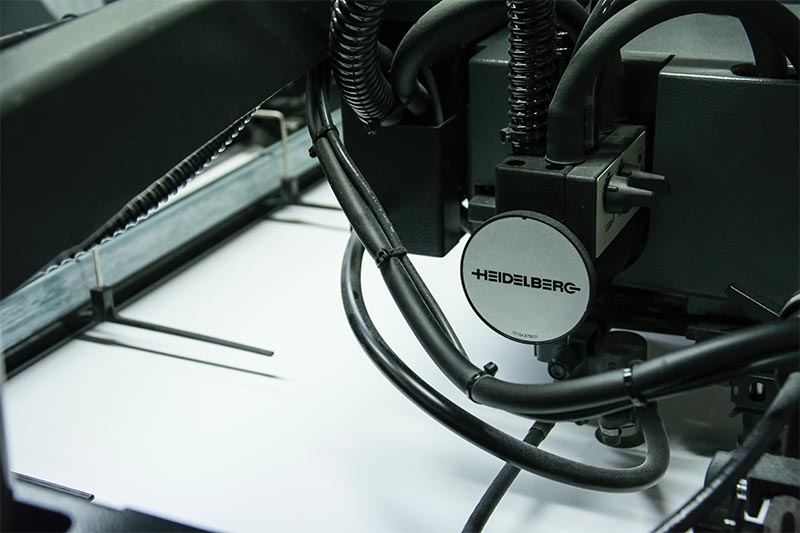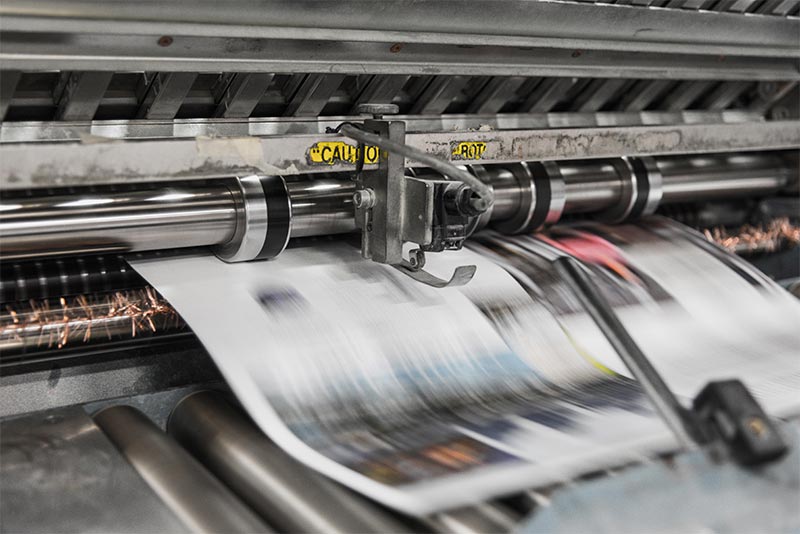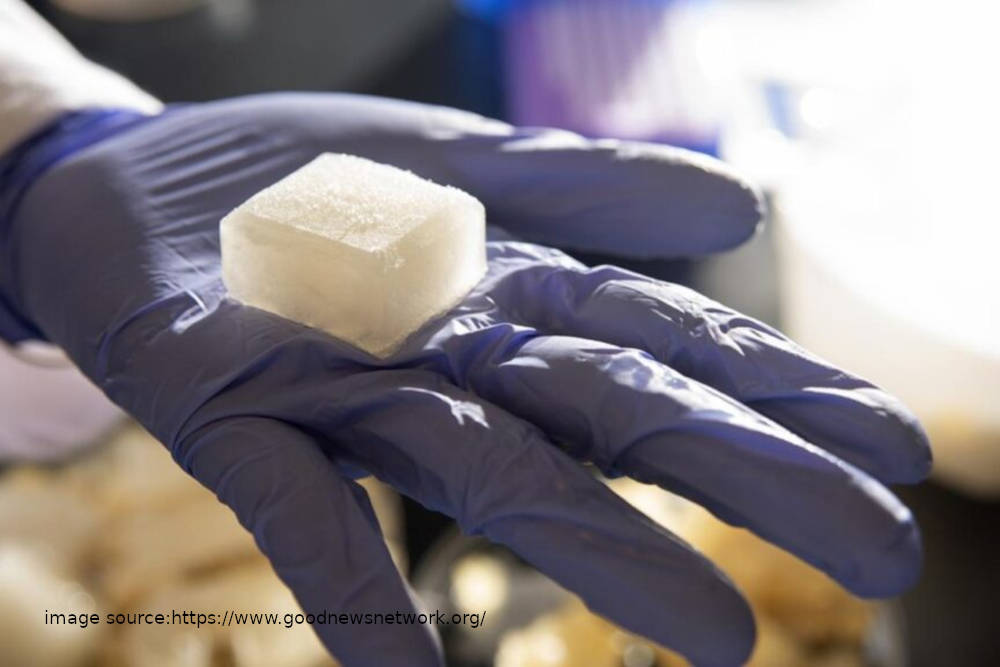Unprinting some of our pollution away
- Home
- Swallow Green
- Unprinting some of our pollution away
Unprinting some of our pollution away
- access_time24 June 2020
- account_circleSwallow Green

Imagine your printer having an “unprint” button, that used pulses of light to remove toner, reducing the environmental impact, compared, of course, with conventional paper recycling.
A Rutgers university-based team has created a new way to “unprint” paper that, unlike laser-based methods, can work with the standard, coated paper commonly used in home and office printers. The new method uses pulses of light coming from a xenon lamp, and is able to erase black, blue, red and green toners without damaging the paper itself, according to a study published in the Journal of Cleaner Production.

“Our method makes it possible to unprint and then reprint on the same paper at least five times, which is typically as many times paper can be reused with conventional recycling. By eliminating the steps involved in conventional recycling, our unprinting method could reduce energy costs, pollution and greenhouse gas emissions.”
Study co-author Rajiv Malhotra, an assistant professor in the Department of Mechanical and Aerospace Engineering in the School of Engineering at Rutgers University–New Brunswick.

Conventional recycling of coated paper, although well-meaning and necessary, is a major contributor to climate change emissions, chemical pollution and energy use, according to the study. Extending the life of paper keeps it in circulation longer, all while avoiding these recycling steps, which can yield significant environmental benefits.
The engineers’ next steps are to further refine the method itself, by testing additional toner colors on a wider range of paper types, which will possibly widen the impact of this method. Unprinting can be done with simple equipment and a wipe with a very small amount of benign alcohol, and the engineers are working to integrate unprinting with typical office and home printers, bringing this revolution to the wold.
Sourced from Rutgers University






